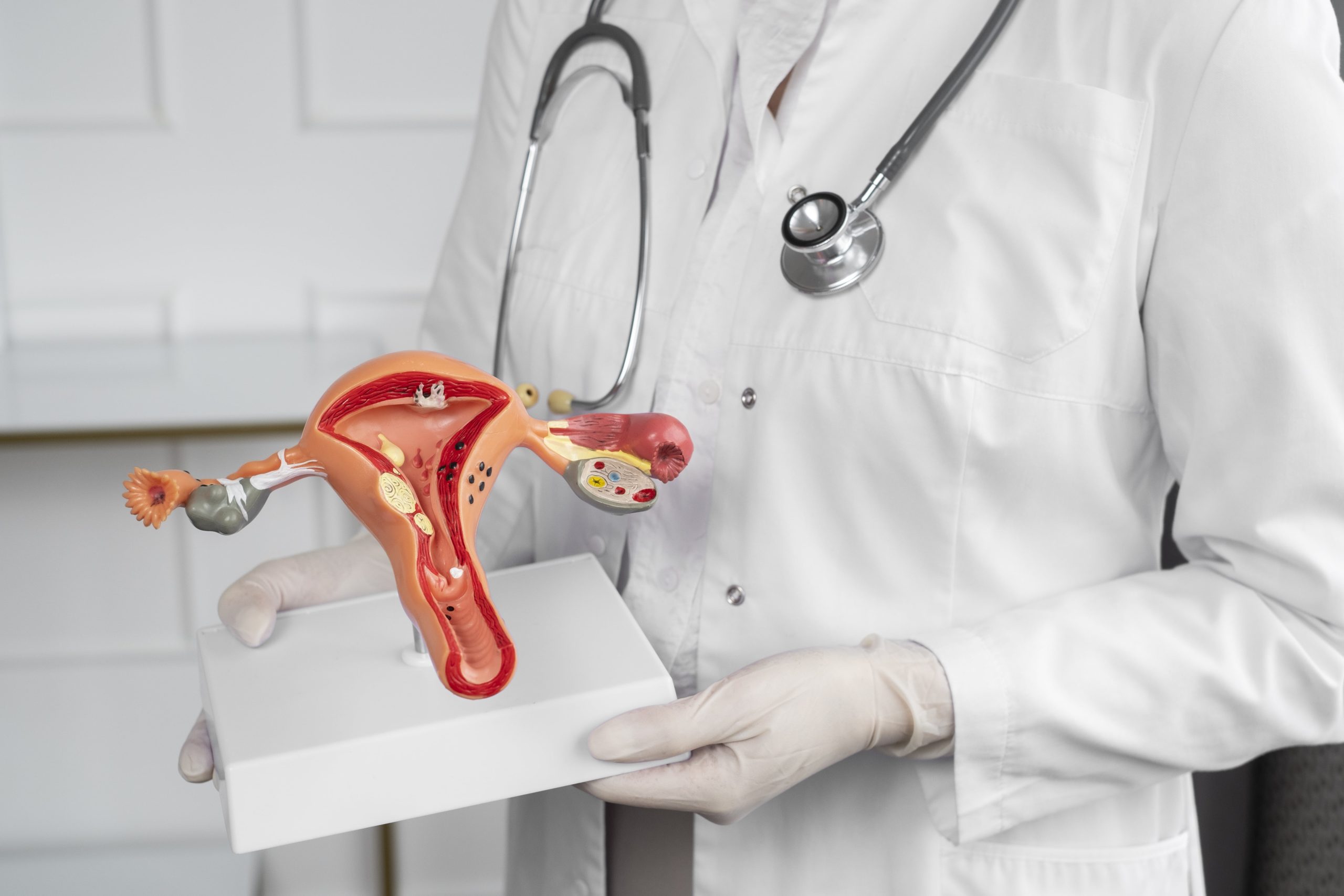Monday to Friday – 5pm to 8pm | Saturday – 10am to 1pm | Sunday – Closed
A-289, Sector-43, Noida | +91 98106 40531

Dr Puja Jain Dewan
sr gynecologist | obstetrician | Laparoscopic Gyne Surgeon
MBBS | MD | DGO | FMAS | FICOG
Signs of a Uterine Fibroid, Its Diagnosis, and Treatment

Uterine fibroids are one of the most common gynecological conditions affecting women, especially during their reproductive years. Despite being non-cancerous growths in the uterus, fibroids can cause significant discomfort and complications if left untreated. In this blog, we will discuss the signs of uterine fibroids, how they are diagnosed, and the treatment options available, tailored for Indian women and their recovery needs.
What Are Uterine Fibroids?
Uterine fibroids, also called leiomyomas or myomas, are growths made of muscle and fibrous tissue that develop in or around the uterus. These growths vary in size—ranging from as small as a seed to as large as a melon—and can be single or multiple.
Signs and Symptoms of Uterine Fibroids
While some women may not experience any symptoms, others can face a variety of issues depending on the size, location, and number of fibroids.
Heavy Menstrual Bleeding (Menorrhagia):
- Unusually heavy periods lasting more than 7 days.
- Passing large blood clots during menstruation.
Pelvic Pain or Pressure:
- Persistent discomfort in the lower abdomen.
- Feeling of fullness or heaviness in the pelvic area.
Frequent Urination:
- Larger fibroids may press on the bladder, causing the need to urinate more frequently.
Pain During Intercourse:
- Discomfort or pain during sexual activity, especially with fibroids located near the cervix.
Backache or Leg Pain:
- Fibroids pressing on surrounding nerves can cause pain radiating to the back or legs.
Reproductive Issues:
- Difficulty conceiving or recurrent miscarriages.
- Complications during pregnancy, such as preterm labor.
Other Symptoms:
- Constipation due to pressure on the rectum.
- Abdominal bloating or an enlarged abdomen.
Diagnosis of Uterine Fibroids
Timely diagnosis is key to managing fibroids effectively. A gynecologist like Dr. Puja Dewan will perform several steps to confirm the condition:
Medical History and Physical Examination:
- Your doctor will ask about your symptoms and medical history. A pelvic exam can help detect abnormalities in the size or shape of the uterus.
Ultrasound:
- This is the most common diagnostic tool. A transabdominal or transvaginal ultrasound provides a clear picture of the fibroids.
MRI (Magnetic Resonance Imaging):
- MRI scans are sometimes used to get a more detailed view, especially if surgery is being planned.
Hysteroscopy:
- A thin, lighted tube is inserted into the uterus to examine the inner lining.
Other Tests:
- Blood tests may be done to check for anemia caused by heavy bleeding.
- In some cases, advanced imaging like sonohysterography (using saline in the uterus) may be recommended.
Treatment Options for Uterine Fibroids
Treatment depends on the severity of symptoms, size, location of the fibroids, and the patient’s age or desire to conceive.
1. Medications:
- Pain Relievers: Over-the-counter painkillers like ibuprofen can help manage mild symptoms.
- Hormonal Therapy:
- Birth control pills or hormonal IUDs can regulate heavy periods.
- Gonadotropin-releasing hormone (GnRH) agonists shrink fibroids temporarily but are used short-term due to side effects.
2. Non-Surgical Procedures:
Uterine Artery Embolization (UAE):
- This minimally invasive procedure blocks the blood supply to the fibroid, causing it to shrink.
- Recovery is quicker compared to surgery, but it is not suitable for women planning future pregnancies.
MRI-Guided Focused Ultrasound Surgery (FUS):
- A non-invasive technique that uses high-frequency ultrasound waves to destroy fibroid tissue.
3. Surgical Options:
Myomectomy:
- Removes fibroids while preserving the uterus, making it a preferred choice for women who want to have children.
- Can be performed via open surgery, laparoscopy, or hysteroscopy depending on the fibroids’ location.
Hysterectomy:
- The complete removal of the uterus is the only permanent solution for fibroids.
- Recommended for women with severe symptoms who do not plan to conceive.
4. Lifestyle and Alternative Therapies:
- Maintain a balanced diet rich in fruits, vegetables, and whole grains to reduce inflammation.
- Stay active with light exercises like walking or yoga to manage symptoms.
- Some Indian women find relief through Ayurvedic treatments, but these should always complement medical advice.
When to Consult a Gynecologist?
It’s essential to seek medical attention if:
- You have heavy bleeding or prolonged periods.
- Pelvic pain or pressure interferes with daily life.
- You’re planning a pregnancy but face difficulties in conceiving.
Conclusion
Uterine fibroids are manageable with the right diagnosis and treatment. Early intervention can prevent complications and improve quality of life. If you notice any symptoms, don’t hesitate to consult Dr. Puja Dewan for expert care tailored to your individual needs.
Disclaimer: This blog provides general information. Always consult your gynecologist for personalized advice.
Important Links
Pregnancy Care
Gynecology Treatments
laproscopic surgeries
Dewan's Ortho Gyne Clinic
Made with ♥ by Grey Matter Ink
